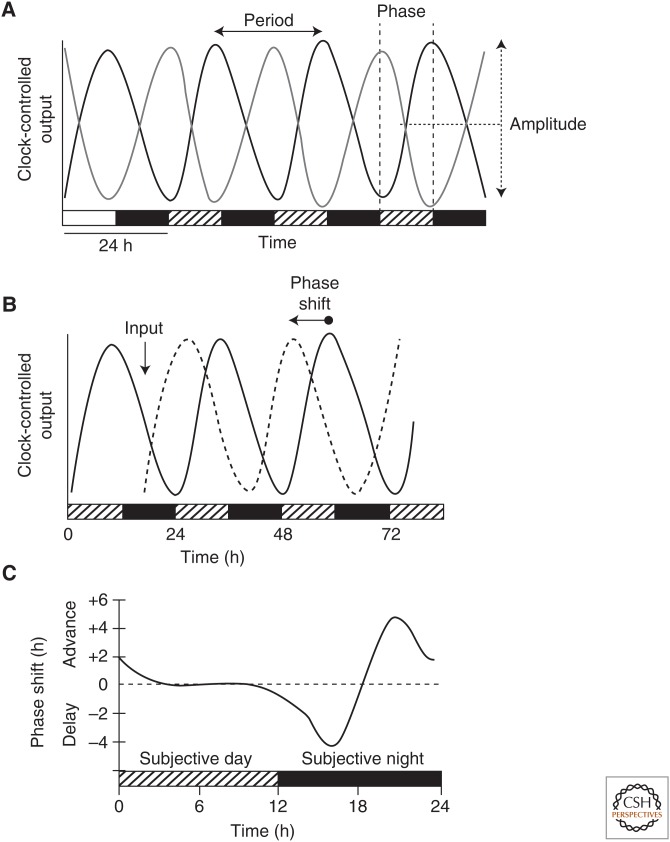Figure 2.
Properties of a circadian rhythm. (A) Behavioral circadian rhythms can be entrained by external stimuli, such as a light–dark cycle, and will persist with a near 24-h period in the absence of environmental cues, such as constant darkness. Properties of the rhythm that are commonly measured are period, phase, and amplitude. Period is the duration of time to complete one cycle. It is typically measured from peak to peak, but it can be measured from any specific position on the curve. Phase is the relative position on the curve (e.g., the peak) in reference to a particular time, such as time placed in constant darkness. Amplitude is the measurement of the recorded output from the midline of the curve to either the peak or trough. (B) The phase of a circadian rhythm can be reset by the stimuli to which it entrains. In this case, exposure to a stimulus (input) rapidly lowers the level of the rhythmic variable (dashed line), which recovers to a rhythm with a shifted phase as compared with the curve that did not receive the input (solid line). On the x-axis time in the light–dark cycle is depicted by alternating white and black bars, and time under constant conditions is depicted by alternating hatched and black bars. Level of clock-controlled output is displayed on the y-axis. (C) Phase-response curves measure the magnitude and direction of phase-dependent responses to brief exposures of an external stimulus. The x-axis represents the circadian time at which a light pulse is applied to an organism; the y-axis shows the change in phase of the circadian-controlled output in response to the light pulse. Positive shifts are indicated as advances and negative phase shifts are delays. A brief light pulse given to an organism during the subjective day (the organism’s own internal day) produces little to no phase response, light in the early subjective night (the organism’s own internal early night) produces phase-delay shifts, and light in the late subjective night produces phase-advance shifts.

